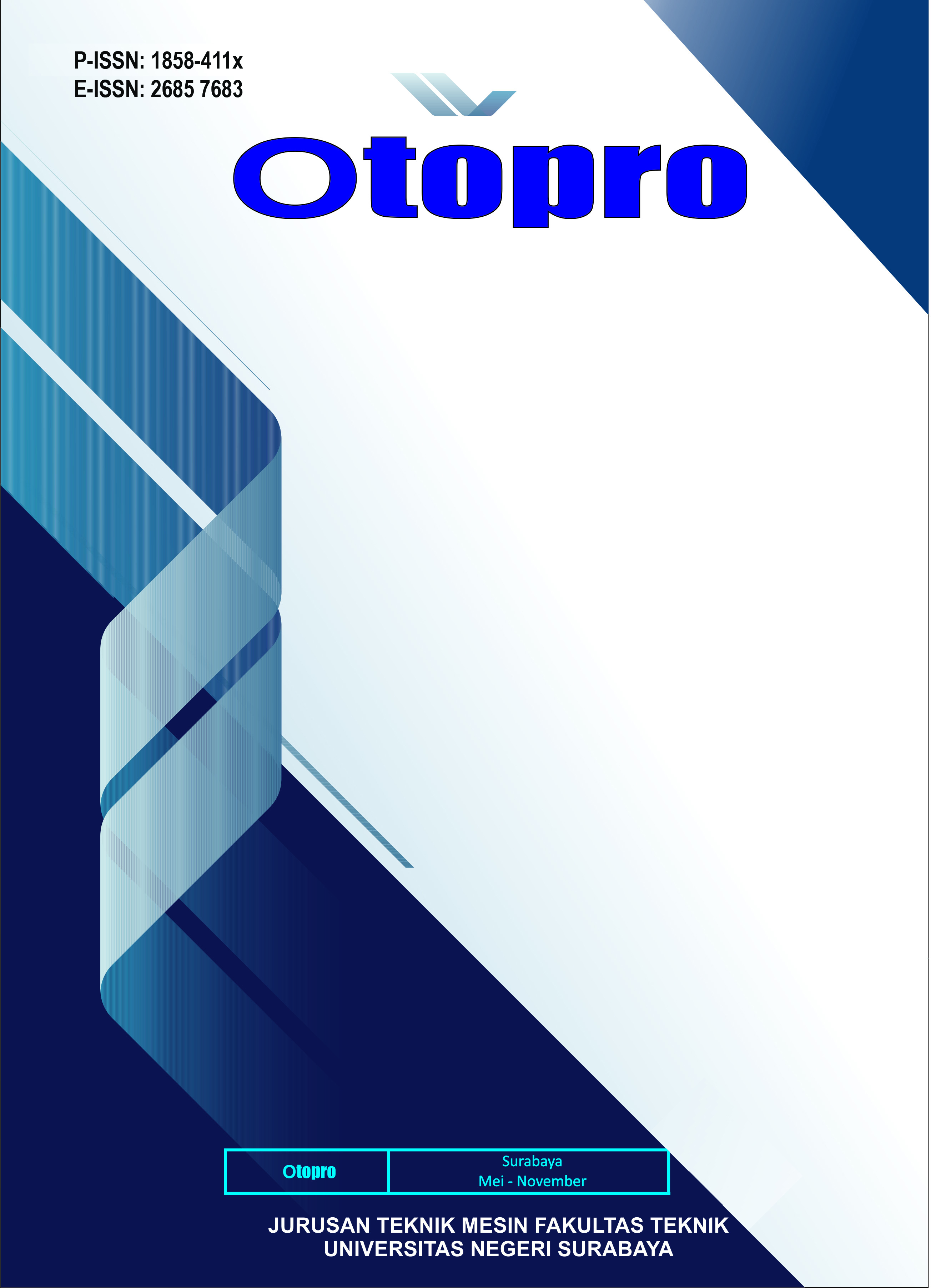PEMANFAATAN KICK FOOT SENSOR UNTUK MEKANISME BUKA TUTUP BAGASI KENDARAAN
DOI:
https://doi.org/10.26740/otopro.v17n1.p8-14Keywords:
actuator, baggage, sensorsAbstract
Along with its development, car manufacturers are increasingly improving safety and security features in each of their products. Currently, this element of safety and security has become an important target in the development of the existence of various features that exist in a vehicle. In this study, the power back door feature is implemented by using the kick foot sensor as input data to open and close the trunk of the vehicle through the actuator. This feature uses a foot sensor so you don't have to press any buttons, just point your foot under the rear bumper and the sensor will automatically read and open the trunk door. This feature is very helpful for passengers who want to put their luggage in the trunk but have both hands to carry items such as bags or plastic shopping bags. There are several stages carried out in this research. In the first stage, the specification of the required actuator motor, including force and torque, is carried out by analyzing the free body diagram to be able to open and close the trunk. In the second stage, the trunk door is tested when the condition is open and close. From the test results, the average time to open the trunk is 11.79 seconds, while the average time to close the trunk is 11.56 seconds. The time obtained is faster than the initial design target set, which is 15 seconds both when opening and closing the trunk. While the sensitivity of the motion sensor can range from 20 mm to 400 mm when the foot is directly under the sensor.
References
(2014) Astra Otoparts website. [online], https://aki.gs-astra.com/tentang-astra-otoparts, tanggal akses: 25 Agustus 2021
Alan G Smith, Introduction to Arduino, hal 1-172, September 2011

Downloads
Published
How to Cite
Issue
Section
License
Copyright (c) 2021 Otopro

This work is licensed under a Creative Commons Attribution-NonCommercial 4.0 International License.
 Abstract views: 465
,
Abstract views: 465
, PDF Downloads: 593
PDF Downloads: 593


3.png)










